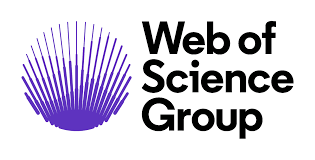Detection and Quantification of Alternaria solani in Tomato by Real Time PCR
DOI:
https://doi.org/10.24154/jhs.v9i2.197Keywords:
Alternaria solani, Molecular Diagnosis, Real Time PCR, Early BlightAbstract
A conventional and real-time PCR assays using SYBR Green for the detection and quantification of A. solanihave been developed and validated. A primer set (ALP and ITS4) designed from the ITS region of A. linicola/ A. solani complex, yielded a 536 bp product when DNA from 38 isolates of A. solani were amplified. No product was amplified from A. alternata, A. brassicae, A. brassicicola, A.helianthi, A. porri, A. sesami, A.carthami, A.ricini, Colletotrichum gloeosporioides, C. capsici, C. falcatum, Cercospora canescens, C. capsici, Phytophthora infestans, Sclerotium rolfsii, Fusarium equiseti, F. oxysporum, Rhizoctonia solani, Phoma exigua, Curvularia spp and Drechslera. In addition, ALP/ITS4 primers were successfully utilized in real-time PCR assays of A. solani. The efficiency of conventional and real-time PCR assays was compared. The conventional PCR was able to detect the pathogen on symptomatic artificially infected tomato plants 5 days after pathogen inoculation. The detection limit was 100 conidia and 10 pg of DNA in the case of conventional PCR. Real-time PCR exhibited a detection limit 10 times lower (10 conidia, 10fg of DNA). The application of real time PCR assay for rapid detection of A.solani in infected tomato plant material is discussed.
Downloads
References
Alaei, H., Baeyen, S., Maes, M., Hofte, M. and Heungens, K. 2009. Molecular detection of Puccinia horiana in Chrysanthemum x morifolium through conventional and real-time PCR. J. Microbiol. Meth., 76:136–145 DOI: https://doi.org/10.1016/j.mimet.2008.10.001
Chaerani, R. and Voorrips, R. 2006. Tomato early blight (Alternaria solani): the pathogen, genetics and breeding for the resistance. J. Gen. pl. Pathol., 72:335-347 DOI: https://doi.org/10.1007/s10327-006-0299-3
Chowdappa, P., Brayford, D., Smith, J. and Flood, J. 2003. Molecular discrimination of Phytophthora isolates on cocoa and their relationship with coconut, black pepper and bell pepper isolates based on rDNA repeat and AFLP fingerprints. Curr. Sci., 84:1235-1238
Debode, J., Hemelrijck, W.V., Baeyen, S., Creemers, P., Heungens, K. and Maes, M. 2009. Quantitative detection and monitoring of Colletotrichum acutatum in strawberry leaves using real-time PCR. Pl. Pathol., 58:504–514 DOI: https://doi.org/10.1111/j.1365-3059.2008.01987.x
Ellis, M.B. and Gibson, I.A.S. 1975. Alternaria solani. CMI Descriptions of Pathogenic Fungi and Bacteria. 475:1–2
Guillemette, T., Iacomi-Vasilescu, B. and Simoneau, P. 2004. Conventional and real-time PCR-based assay for detecting pathogenic Alternaria brassicae in cruciferous seed. Pl. Dis., 88:490-496 DOI: https://doi.org/10.1094/PDIS.2004.88.5.490
Gwary, D.M. and Nahunnaro, H. 1998. Epiphytotics of Early Blight of Tomatoes in Northeastern Nigeria. Crop Prot., 17:619 -624 DOI: https://doi.org/10.1016/S0261-2194(98)00033-7
Ioos, R., Fourrier, C., Iancu, G. and Gordon, T.R. 2009. Sensitive detection of Fusarium circinatum in pine seed by combining an enrichment procedure with a real-time polymerase chain reaction using dual-labeled probe chemistry. Phytopathology, 99:582-590 DOI: https://doi.org/10.1094/PHYTO-99-5-0582
Khulbe, R.D. and Sati, M.C. 1987. Seed transmission of Alternaria solani in tomato. Indian Phytopathol., 40:106-107
Lievens, B., Brouwer, M., Vanachter, A.C.R.C., Cammue, B.P.A. and Thomma, B.P.H.J. 2006. Real-time PCR for detection and quantification of fungal and oomycete tomato pathogens in plant and soil samples. Pl. Sci., 171:155–165 DOI: https://doi.org/10.1016/j.plantsci.2006.03.009
Lourenco Jr, V., Moya, A., González-Candelas, F., Carbone, I., Maffia, L.A. and Mizubuti, E.S.G. 2009. Molecular diversity and evolutionary processes of Alternaria solani in Brazil inferred using genealogical and coalescent approaches. Phytopathology, 99:765-774 DOI: https://doi.org/10.1094/PHYTO-99-6-0765
Martinez, S.P., Snowdon, R., Pons-Kuhnem ann, J. 2004. Variability of Cuban and international populations of Alternaria solani from different hosts and localities: AFLP genetic analysis. Eur. J. Pl. Pathol., 110:399-409 DOI: https://doi.org/10.1023/B:EJPP.0000021071.65146.c0
McKay, G.J., Brown, A.E., Bjourson, A.J. and Mercer, P.C. 1999. Molecular characterisation of Alternaria linicola and its detection in linseed. Eur. J. Plant Pathol., 105:157-166 DOI: https://doi.org/10.1023/A:1008774221919
Nam, M.H., Pérez-Hernàndez, O.P., Kim, H.G. and Gleason, M.L. 2007. Development of a nested-PCR assay for detection of Colletotrichum acutatum in vitro. Phytopathology, 97:S82
Patterson, C.L. 1991. Importance of chlamydospores as primary inoculum of Alternaria solani, incitant of collar rot and early blight on tomato. Pl. Dis., 75:274-278 DOI: https://doi.org/10.1094/PD-75-0274
Rotem J. 1994. The genus Alternaria biology, epidemiology, and pathogenicity, 1 st edn. APS, St. Paul, MN, pp 48–203
Schena, L., Nigro, F., Ippolito, A. and Gallitelli, D. 2004. Real-time quantitative PCR: a new technology to detect and study phytopathogenic and antagonistic fungi. Eur. J. Pl. Pathol., 110:893–908 DOI: https://doi.org/10.1007/s10658-004-4842-9
Weir, T.L., Huff, D.R., Christ, B.J. and Romaine, C.P. 1998. RAPD-PCR analysis of genetic variation among isolates of Alternaria solani and A. alternata from potato and tomato. Mycologia, 90:813-821 DOI: https://doi.org/10.1080/00275514.1998.12026975
White, T.J., Bruns, T., Lee, S. and Taylor, J.W. 1990. Amplification and direct sequencing of fungal ribosomal RNA genes for phylogenetics. In: PCR Protocols: A Guide to Methods and Applications, Eds. M.A. Innis, D.H. Gelfand, J.J. Sninsky & T.J. White, pp. 315"332. Academic Press, New York, NY, USA DOI: https://doi.org/10.1016/B978-0-12-372180-8.50042-1
Downloads
Published
Issue
Section
License
Copyright (c) 2014 P Chowdappa, B J Nirmal Kumar, B Reddi Bhargavi, K R Hema, S P Mohan Kumar (Author)

This work is licensed under a Creative Commons Attribution-NonCommercial-ShareAlike 4.0 International License.
Authors retain copyright. Articles published are made available as open access articles, distributed under the terms of the Creative Commons Attribution-NonCommercial-ShareAlike 4.0 International License, which permits unrestricted non-commercial use, distribution, and reproduction in any medium, provided the original author and source are credited. 
This journal permits and encourages authors to share their submitted versions (preprints), accepted versions (postprints) and/or published versions (publisher versions) freely under the CC BY-NC-SA 4.0 license while providing bibliographic details that credit, if applicable.





 .
. 











